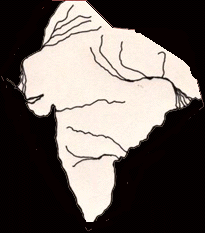|
1. What is the origin of the Buddhist stupa? What are the principle parts of the stupa? Within Buddhism, how does the stupa represent a cosmic diagram, or mandala? 2. Compare the Bharhut and Sanci stupas: in each case, how did the carvers create a sense of a sacred place? How did they make the worshipper feel that he or she was leaving behind the world of illusion? 3. Compare the sculpture at Bharhut and Sanci: h ow carefully did the carvers want to convey the texture of surfaces? the sense of flesh in stone? The figures at Sanci are much more freed from the stone than are those of Bharhut; what difference does that make to their sense of vitality? 4. Think about the carving at both stupas and the Buddhist understanding of the vanity of physical desire and of the illusion of physical reality. How do you explain the contrast, here, between religious ideal and artistic expression? 5. Why should the ancient Indians have bothered to carve worship halls out of stone, when they could have built them from wood or bamboo much more easily? 6. What distinctive changes did Mahayana Buddhism introduce into the religion? Why should that form of Buddhism have spread so quickly through India, and then beyond? 7. How would you describe the Bodhisattva, in spirit and in appearance? 8. What is the meaning of karma and rebirth within Mahayana Buddhism? Think about how that meaning might be reflected in art....
Sites of the Week :
Snodgrass, Adrian. The symbolism of the stupa / Ithaca, N.Y. : Southeast Asia Program, Cornell University, 1985.
Cunningham, A. The stupa of Bharhut: a Buddhist monument ornamented with numerous sculptures illustrated [sic] of Buddhist legend and history in the third century BC Varanasi, Indological Book House, 1962.
Dehijia, Vidya. Early Buddhist rock temples; a chronology.
Ithaca, N.Y., Cornell University Press [1972]
|


